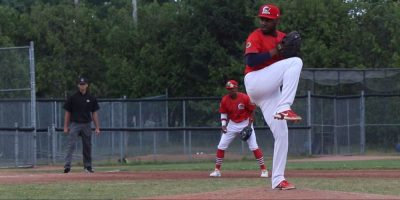
Not that anyone is likely complaining in Barrie that the multi-day snow squall event that has buried parts of Muskoka and Parry Sound in 55 to 65 cm of snow missed the city, forecasters say specific conditions are needed for a "classic" snow squall event in our neck of the woods.
Snow squalls began around midday Saturday with the passage of the winter storm, and while Barrie did see some blowing snow and heavy flurries, the nastiest weather struck the Midland and Orillia areas, Muskoka and Grey County, before shifting north into Parry Sound.
"The winds have been from the west or southwest and that's meant that the orientation of these bands of snow coming inland from Georgian Bay have struck more of those areas in and around Parry Sound," said Geoff Coulson, Environment Canada meteorologist.
The wind is expected to shift more to the west on Wednesday afternoon, sending the snow bands south to areas around Gravenhurst and Bracebridge, as well as Midland and possibly Orillia. Environment Canada says snowfall totals could be in the 25 to 50 cm range for south portions of Muskoka and 15 to 20 cm for the Midland area.
Squalls battered the Midland and Orillia areas at the weekend, and Coulson said the snowfall total was in the 30 to 50 cm range, based on radar estimations and high-resolution model information.
Coulson was asked why Barrie for the most part has dodged this heavy snow squall activity.
"For a classic snow squall event for Barrie, what we're looking at is winds from the northwest coming right down the axis of Georgian Bay. Those winds lining up from the northwest bring the lake effect activity right into Barrie, Lake Simcoe and even southeastwards from there if the event is strong enough."
Coulson also stressed that lake effect squalls can be extremely localized.
"Not only very localized but they can also be variable," he added. "The bands can be locked in for a number of hours in one location and be relatively narrow, such that someone a few kilometres to the north or south of the band could still be in sunshine whereas the people within the band are experiencing near zero visibility in a combination of snow and blowing snow."
Coulson said the other concern is that even a slight shift in the low-level wind can move the bands around.
"So areas that were previously not being impacted suddenly are in the midst of these significant squalls."
Coulson said the general forecast for snow squall activity is well understood.
"We know the ingredients, and really it comes down to fine-tuning what that forecast is going to be for the low-level wind. We can get a pretty good sense of what that low-level wind is going to do a number of hours out and also when those winds are going to shift and change and where those bands are going to move to."
He said the science of forecasting snow squalls is progressively getting better year after year, allowing forecasters to give more finely-tuned information to the public.
The ingredients needed for lake effect squalls will begin to wane by later on Thursday, according to Coulson.
However, the cold weather will linger into Saturday, and then an upswing in the temperature, and Coulson expects by next week a return to milder than normal conditions.
The normal high in Barrie this time of year is minus 4 and the normal overnight low is minus 14.





